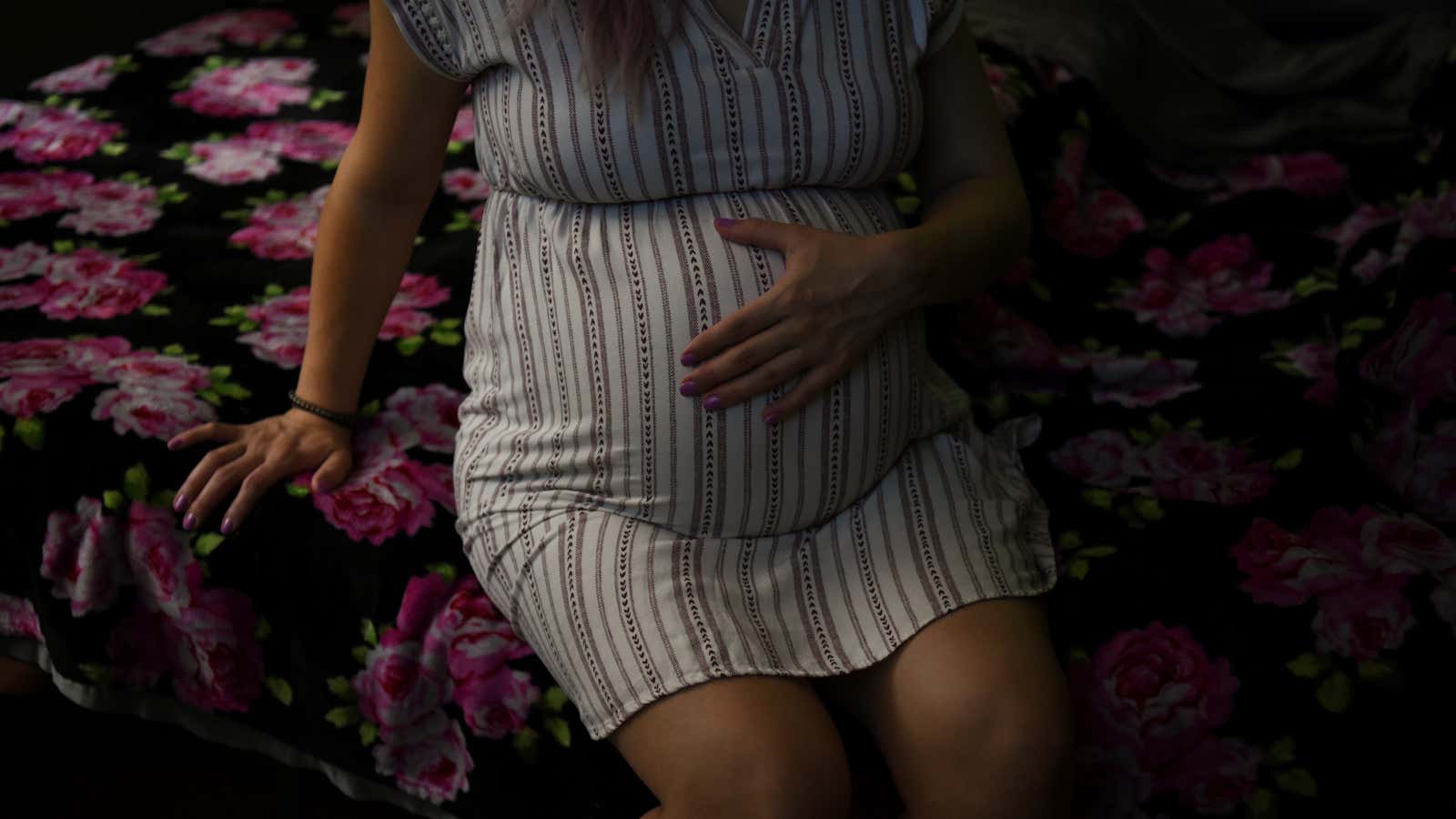Pregnant women—and particularly minority women—might be at higher risk of developing severe cases of Covid-19. Or they might not be.
A report published in June by the Centers for Disease Control and Prevention (CDC) shows Hispanic and Black pregnant women are disproportionately affected by severe cases of coronavirus, requiring hospitalization and, in some case, intensive care and mechanical ventilation. Initial research suggests that women who have Covid-19 at the time of delivery may experience complications, and that fetuses, too, might be at risk of complications even after delivery.
But consistent with the US’s poor track record when it comes to maternal health data, the numbers we have so far are poorly collected, and overall unreliable.
According to an analysis of Covid-19 reports of 91,412 women from across the country—of which 8,207 were pregnant and 83,205 were not —the former were 5.4 times more likely to be hospitalized, controlling for age, race, and the presence of underlying health conditions. Pregnant women were also 50% more likely to need ICU treatment, and 70% more likely to need a ventilator.
The study also found pregnant Hispanic and Black women were overrepresented in Covid-19 cases: Hispanic women, especially, who made up about 23% of the pregnant population in 2019 (the most recent data available), accounted for 46% of the pregnant women with Covid-19 during the study period, between Jan. 22 and June 7. Black women, who made up 15% of the pregnancies in 2019, were 22% of the pregnant women hospitalized with Covid-19.
The data suggests the fatality rate for pregnant women with Covid-19—0.25% —is about the same as women who aren’t pregnant. But it’s impossible to say, because the data doesn’t even tell half the story.
The 91,412 women are just 28% of the initial set of 326,335 women of reproductive age who tested positive for Covid-19 that were selected for the analysis. Of the remaining 71%, the CDC didn’t have information on whether the women were pregnant or not.
Only about a quarter of the total case reports for Covid-19 include any information on pregnancy status, according to the CDC. In some cases, the status is being updated, in others it might take a long time to know—if ever at all.
“We do not know the total number of cases and are seeing in these data the cases that represent those who are most likely to get tested and to have their status reported,” says Neel Shah, a gynecologist at Harvard Medical School who has long been working to tackle maternal mortality in the US. So the total number of pregnant women with Covid-19 remains unknown.
Something else seems even more egregious: For a study that relies on rates of hospitalization as an indication of the severity of Covid-19, cases, there’s no indication of why these pregnant women were actually in the hospital. Specifically, all the pregnant women recorded as hospitalized by the CDC data might have been admitted for other causes—including, crucially, labor and delivery, which lead to the hospitalization of nearly all pregnant women.
It will take a long time to get clarity, too. Because records often don’t accurately account for the cause of death and require extensive review, data on maternal mortality in the US currently takes years to be collected and formally analyzed.
